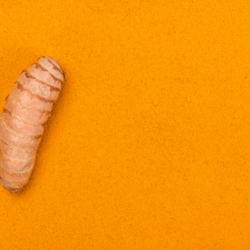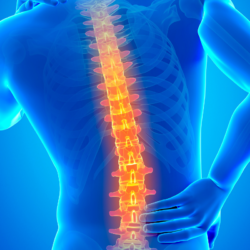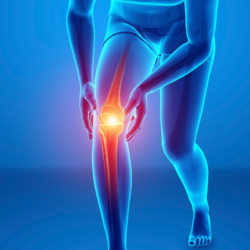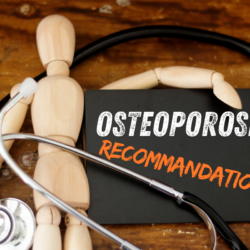Osteoarthritis of the hand disrupts the daily lives of millions of people. With these ground-breaking national recommendations, professionals and patients now have a solid framework for improving the management of this often underestimated chronic disease.
Osteoarthritis of the hand: understanding the real issue
Osteoarthritis of the hand affects one adult in ten, but all too often we overlook its real impact. It leads to chronic pain, loss of strength and limits your ability to perform essential tasks such as writing, preparing meals or turning a key to open a door. From now on, France will be adapting its recommendations to its own specific circumstances, to offer you a tailor-made response that is more effective than previous European guides.
Symptoms that go much deeper than simple deformities
Osteoarthritis of the hand is not just a question of aesthetics. It causes persistent morning stiffness, reduces grip strength, generates chronic pain and limits the agility of your fingers. These problems have a direct impact on your quality of life and increase the number of obstacles in your daily life.
Easily identify the different types of osteoarthritis of the hand. You may encounter :
- Digital osteoarthritis: swelling, nodosities, visible deviations in the fingers, and pain in the interphalangeal joints
- Rhizarthrosis: pain and loss of strength at the base of the thumb, making pinching difficult.
- Erosive form: inflammatory flare-ups that accelerate cartilage degradation.
Each variant requires a targeted, personalised approach to limit pain and preserve hand function.
Take action with a multimodal approach
To alleviate osteoarthritis of the hand, you can now benefit from a comprehensive approach, incorporating therapeutic education, personalised treatments and complementary solutions.
Therapeutic education: taking control of your disease
You’ll gain a better understanding of your condition and play an active role in managing your symptoms, which will help you to adhere more closely to your medical treatment and reduce your fear of pain.
A strategy adapted to each situation
Doctors adjust treatments according to the intensity of the pain, the presence of inflammation, the joints involved, your expectations and co-morbidities. This personalised approach maximises the effectiveness and safety of the treatment. The aim is to optimise pain relief while minimising the risks associated with treatment.
Combining medicinal and non-medicinal treatments
You will reap the full benefits of comprehensive management of this joint pathology: re-education exercises, wearing orthoses when necessary, ergonomic adaptations, judicious use of anti-inflammatories, targeted corticosteroid injections or pharmaceutical-grade chondroitin sulphate.
Non-medicinal measures at the heart of success
You can take action now, without waiting for medication, by incorporating these simple measures into your daily routine:
Practice specific exercises
Mobilising, opening and closing the hand, strengthening the intrinsic muscles or using a soft ball all help to make the joints more flexible and improve stability. Three sessions a week are enough to see progress.
Exercises are the first strong recommendation. They should be offered to all patients in order to :
- Soften the joints
- Maintain range of movement
- Strengthen the intrinsic muscles of the hand
- Stabilise daily movements
- Prevent loss of independence
Recommended exercises include opening and closing the hand, rotating the thumb, strengthening the digital muscles, applying gentle pressure on a soft ball and working on proprioception.
Adopt new habits on a daily basis
Change your utensils and tools easily: enlarged handles, ergonomic pens or jar openers limit pain. Maintain your independence by adapting your activities and managing your efforts more effectively.
Try resting orthoses for the night
Wearing an orthosis at night, especially in cases of rhizarthrosis, reduces pain and slows down deformations. Night orthoses are also suitable for painful arthritic fingers, especially in the early stages of development.
Orthoses play an important role in reducing pain and preventing deformity:
- Rhizarthrosis: rigid night orthosis including the base of the thumb
- Interphalangeal osteoarthritis: night orthosis to limit pain and progression of deformities
Use heat as a complement
You can quickly soothe your pain with paraffin, hot compresses or thermal mud. This method offers a natural and safe analgesic effect, particularly in times of crisis.
Avoid unnecessary techniques
Save time and avoid disenchantment: laser, magnetotherapy, electromagnetic waves, kinesiotaping and acupuncture have no proven effectiveness for osteoarthritis of the hand, according to the latest studies.
The right treatments, at the right time
The medical strategy is based on the rational use of treatments adapted to the phase and form of the osteoarthritis of the hand you are suffering from.
Give preference to local anti-inflammatories
As a priority, choose creams or gels containing 0.5% diclofenac: they effectively relieve pain and stiffness, while limiting the side-effects compared with tablets.
Use oral NSAIDs sparingly
Limit them to acute inflammatory flare-ups, for a few days only and never without medical advice, especially if you have other medical conditions.
Reserve corticosteroids for special situations
Tablets should only be used in cases of severe, widespread inflammation over a short period of time. Infiltrations only provide relief for fingers in crisis, but are useless for the base of the thumb outside of acute inflammation.
Include chondroitin sulphate
Take 800 mg/day of pharmaceutical-grade chondroitin sulphate. This natural treatment offers real benefits in terms of pain relief and mobility when chosen correctly.
Avoid unsuitable medicines
For your own safety, avoid opioids (their risk outweighs their benefit), biotherapy, hydroxychloroquine or methotrexate, which do not improve the pain or quality of life of patients with osteoarthritis of the hand.
Conclusion: modern, personalised treatment for osteoarthritis of the hand
Thanks to these French recommendations, you have access to a structured, humane approach that is adapted to your day-to-day life. Osteoarthritis of the hand is better managed today: by combining treatment, adaptation and follow-up, you can preserve your comfort and mobility for the long term.
FAQ on osteoarthritis of the hand
What is osteoarthritis of the hand?
Osteoarthritis of the hand is a chronic disease that affects the cartilage of the fingers and thumb. It causes pain, stiffness, loss of strength and sometimes deformity of the joints, affecting everyday movements.
What are the first symptoms of osteoarthritis of the hand?
The first signs of osteoarthritis of the hand are morning stiffness, pain during movement, localised swelling, loss of mobility and the appearance of nodules on the fingers.
Can osteoarthritis of the hand be stopped?
Osteoarthritis of the hand cannot be stopped, but its progression can be slowed. Regular exercise, resting orthoses and targeted treatments reduce pain and preserve function.
What treatments are effective for osteoarthritis of the hand?
Treatments for osteoarthritis of the hand include adapted exercises, rest orthoses, local heat, topical anti-inflammatories, chondroitin sulphate and, as a last resort, surgery if other solutions fail.
How can osteoarthritis pain in the hand be relieved on a daily basis?
Relieving the pain of osteoarthritis of the hand involves specific exercises, adapting tools, applying heat, resting the joints with orthoses and using local anti-inflammatory treatments if necessary.
When should surgery be considered for osteoarthritis of the hand?
Surgery for osteoarthritis of the hand should only be considered if the pain is very incapacitating and if all other medical treatments have failed to relieve or preserve acceptable function of the hand.
These first French recommendations for osteoarthritis of the hand provide a clear and appropriate framework for healthcare professionals. Their rigorous, personalised application will significantly improve patients’ quality of life and autonomy, with major advances in pain management and prevention of deformity.





